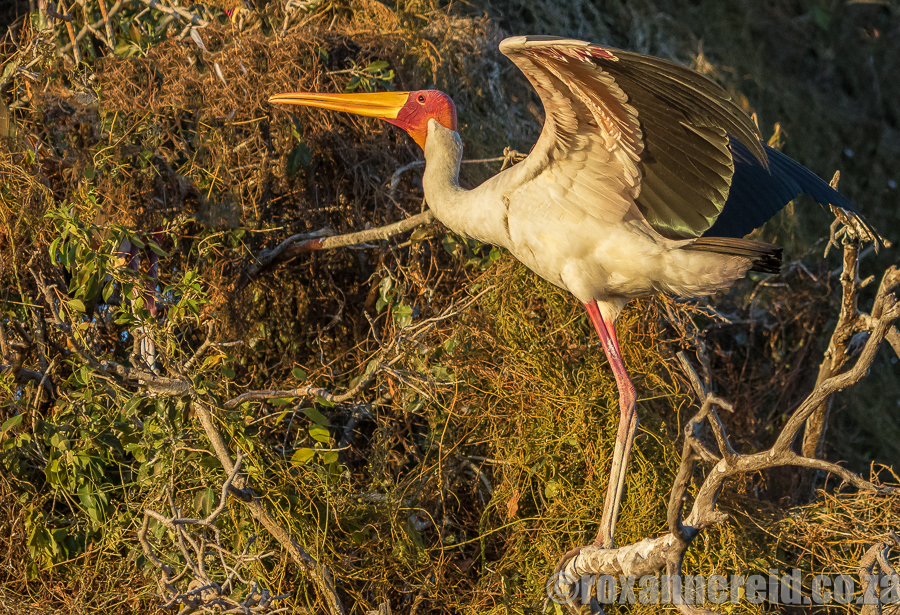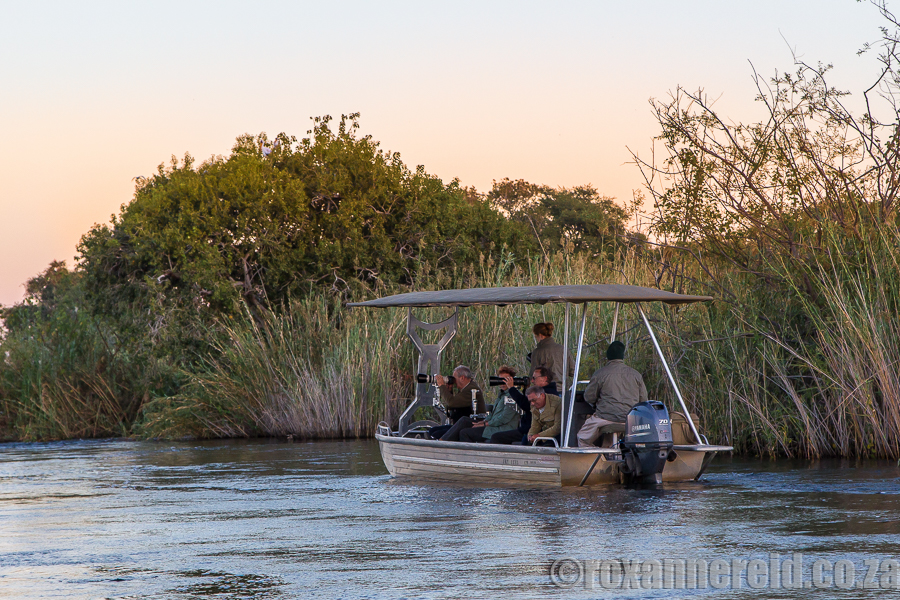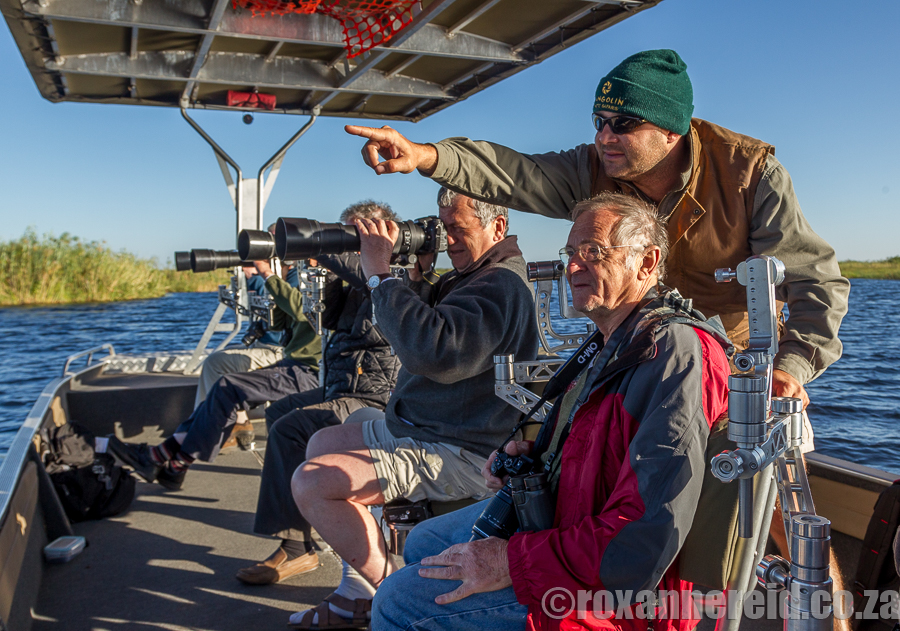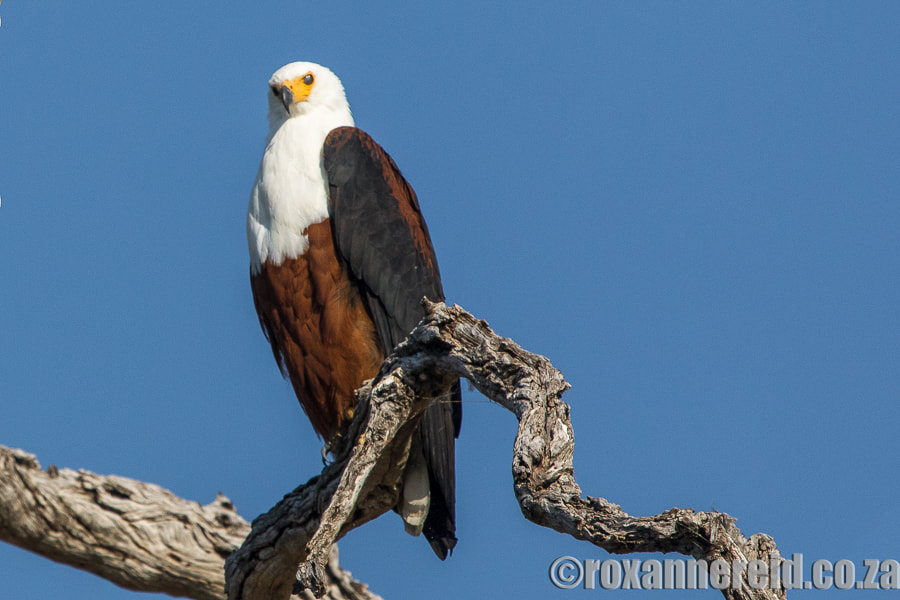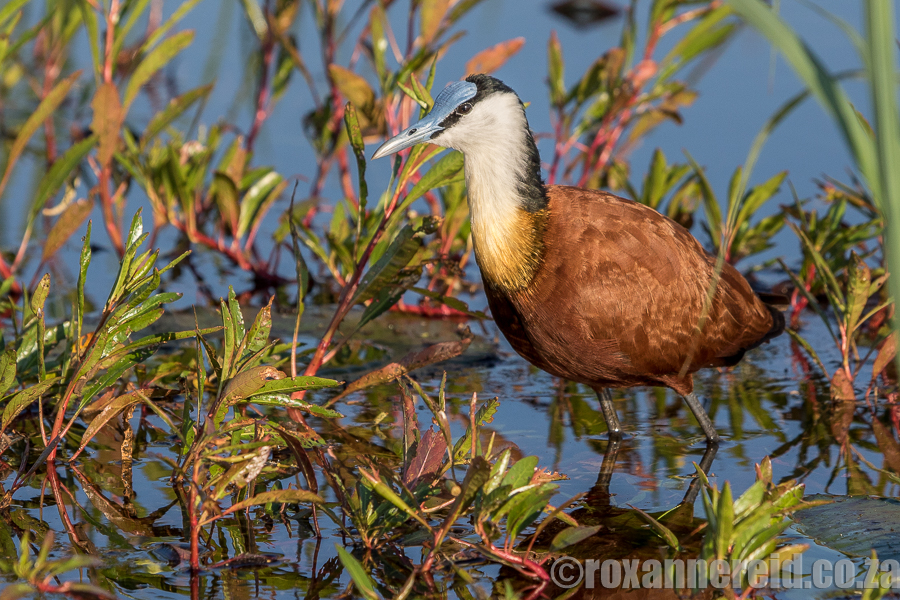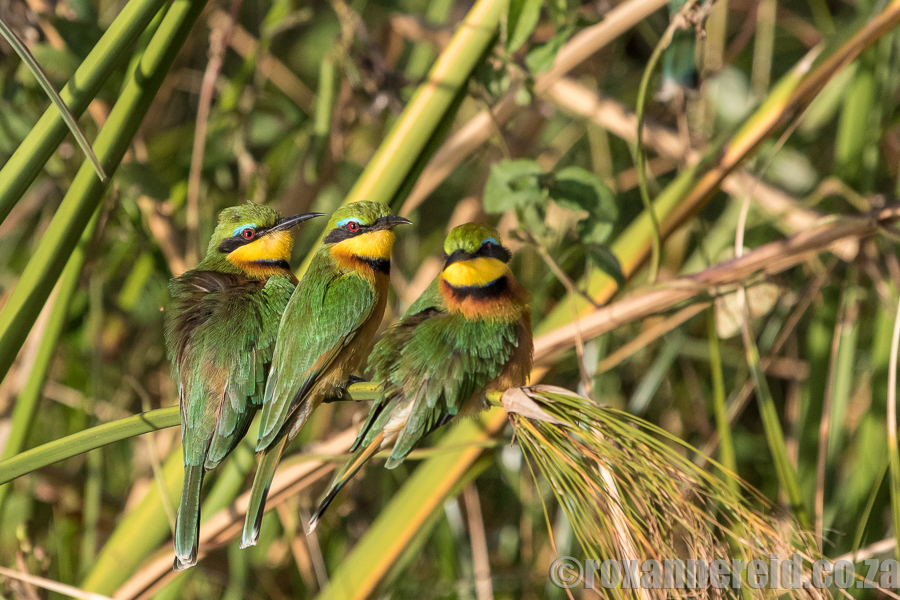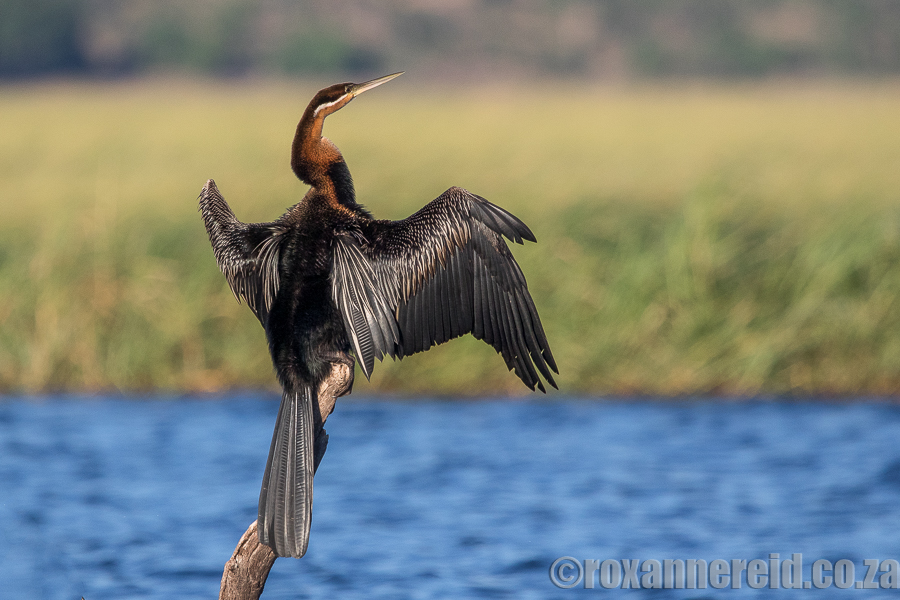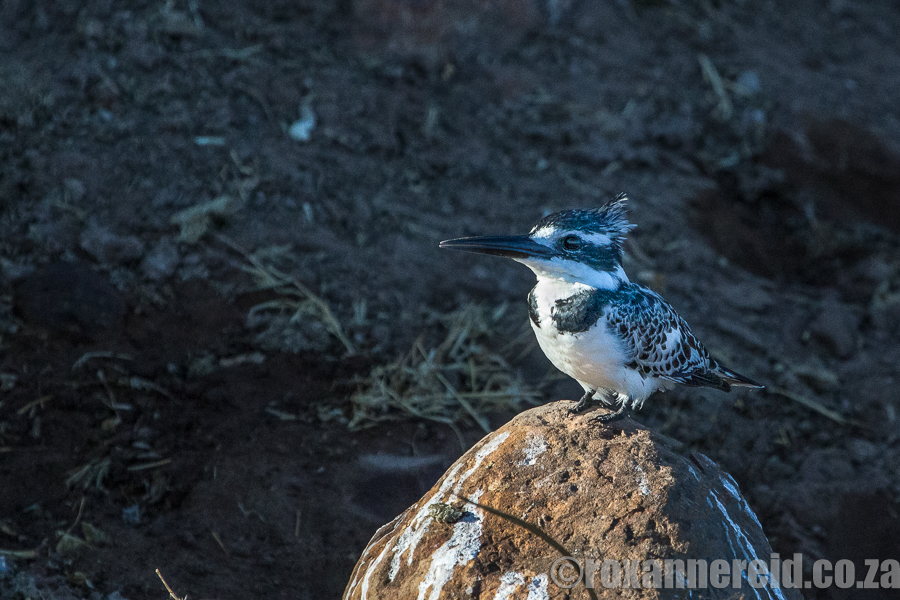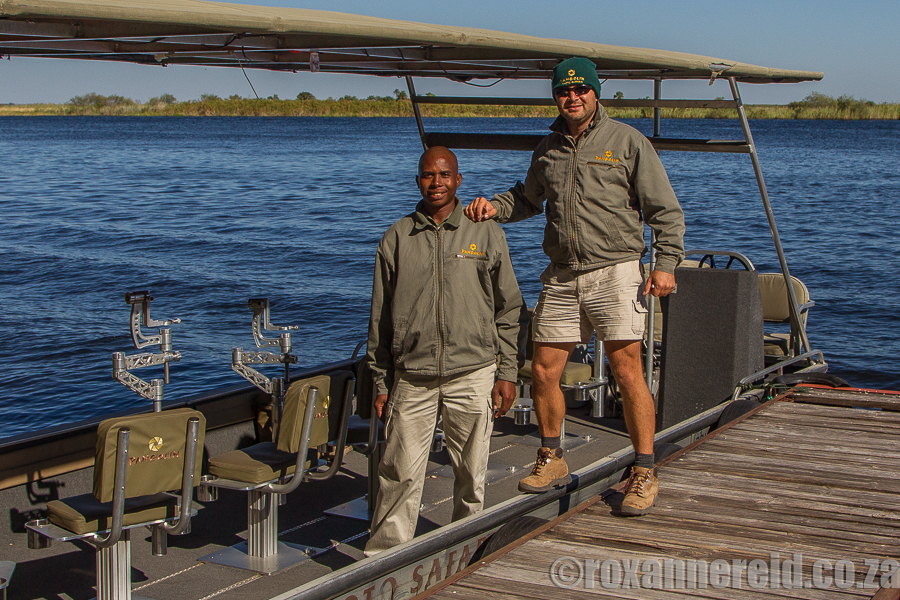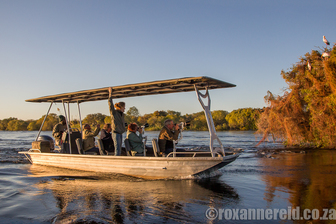
By Roxanne Reid
‘Incoming on the right! Here it comes.’ Six people swivelled on their chairs and pointed their cameras in the same direction, trying to find the bird in flight. A seventh peered through his binoculars. We were on a tutored photo safari on the Chobe River, something a little different from the usual game drive or sunset cruise.
‘Incoming on the right! Here it comes.’ Six people swivelled on their chairs and pointed their cameras in the same direction, trying to find the bird in flight. A seventh peered through his binoculars. We were on a tutored photo safari on the Chobe River, something a little different from the usual game drive or sunset cruise.
Guide-photographer-tutor Guts Swanepoel of Pangolin Photo Safaris had suggested getting our cameras’ shutter speed above 2000 so we could freeze the primal feathers of a yellow-billed stork as it flew towards the nest. ‘We’re not leaving here till all of you have a crisp photo of one of these birds in flight,’ he said.
It wasn’t as easy as you might think. First, boat pilot Schuur Shandweza was fighting three currents in the river rapids to keep the boat steady without hitting the submerged rocks. It was quite a feat, even though Pangolin’s photo boat was custom-designed with weight in the nose to stabilise it and a hull that stays super-flat at all times.
It wasn’t as easy as you might think. First, boat pilot Schuur Shandweza was fighting three currents in the river rapids to keep the boat steady without hitting the submerged rocks. It was quite a feat, even though Pangolin’s photo boat was custom-designed with weight in the nose to stabilise it and a hull that stays super-flat at all times.
Second, once the shout goes up you need to be quick to find the incoming bird, focus on it and be sure you have the right settings to get it pinpoint sharp, the feathers well defined. All while you’re using a 360-degree swivel chair and camera mount that you only met for the first time about 20 minutes earlier. But the high-tech custom-designed seats and mounts mean there should be no excuse for missing a shot – other than our own fumbling or slow reactions.
The yellow-billed storks were nesting in a tree on an island in the rapids. ‘They’re only here for six weeks to breed and then they’re gone again so you’re very lucky to see them,’ said Guts. When they’re breeding the storks have pretty pink feathers. ‘Chicks dig it,’ he grinned. Some of the males opened their mouths, a warning to other males to beware and back off.
The yellow-billed storks were nesting in a tree on an island in the rapids. ‘They’re only here for six weeks to breed and then they’re gone again so you’re very lucky to see them,’ said Guts. When they’re breeding the storks have pretty pink feathers. ‘Chicks dig it,’ he grinned. Some of the males opened their mouths, a warning to other males to beware and back off.
‘Once the eggs hatch, the storks hang around for about a week while the chicks get the hang of flying and then they’re off back to Kenya,’ said Guts.
He’s a natural teacher with a contagious enthusiasm for the art of photography. During our three-hour, hands-on tutored safari he used humour as a way to cement knowledge. For instance, when recapping the basics he explained F stops as ‘Frikkin stupid things’ because the smaller the number, the bigger the aperture.
The Marmite effect
He’s a believer in composing a good shot in the frame rather than doing too much faffing and fixing in LightRoom or PhotoShop afterwards. He egged us on to do the same. We certainly won’t get to be Botswana Wildlife Photographer of the Year like Guts, but we can at least try to improve the quality of our shots using some of his tips.
He’s a natural teacher with a contagious enthusiasm for the art of photography. During our three-hour, hands-on tutored safari he used humour as a way to cement knowledge. For instance, when recapping the basics he explained F stops as ‘Frikkin stupid things’ because the smaller the number, the bigger the aperture.
The Marmite effect
He’s a believer in composing a good shot in the frame rather than doing too much faffing and fixing in LightRoom or PhotoShop afterwards. He egged us on to do the same. We certainly won’t get to be Botswana Wildlife Photographer of the Year like Guts, but we can at least try to improve the quality of our shots using some of his tips.
He walked up and down the boat checking how people were doing, guiding and advising. He also told us little tricks for our own individual cameras. Name a brand or model, he knew his way around them all. ‘That’s my job,’ he said, as if it was nothing.
He taught us how to use ‘back button focus’ on our fairly new Canon 7D Mark II, for instance. Usually you press the shutter button half-way down to focus, then all the way down to take a photo. With back button auto-focus the shutter button doesn’t control the focus; you give that function to a button on the back of the camera.
Now you can press the back button to focus then let your finger go and recompose as long as the subject remains the same distance away. You can also keep your finger pressed down to constantly focus on birds that jiggle about all the time. ‘I call it the Marmite effect,’ Guts said, ‘because people either love it or hate it.’
He taught us how to use ‘back button focus’ on our fairly new Canon 7D Mark II, for instance. Usually you press the shutter button half-way down to focus, then all the way down to take a photo. With back button auto-focus the shutter button doesn’t control the focus; you give that function to a button on the back of the camera.
Now you can press the back button to focus then let your finger go and recompose as long as the subject remains the same distance away. You can also keep your finger pressed down to constantly focus on birds that jiggle about all the time. ‘I call it the Marmite effect,’ Guts said, ‘because people either love it or hate it.’
A festival of birds
Our photo safari with the benefit of his expertise was in the early morning, the best time to see and photograph birds. If you want mammals, you might want to sign up for an afternoon trip instead – and it might be a softer option.
Photographing birds is hard. They’re small and they don’t sit still for long. A giant kingfisher dived to catch a fish and everyone on board groaned – we’d all missed it. An African jacana on a nest was easier because it wasn’t moving. ‘It’s the males that sit on the eggs and look after the chicks,’ said Guts, ‘but only 15-20% of the chicks survive.’
Our photo safari with the benefit of his expertise was in the early morning, the best time to see and photograph birds. If you want mammals, you might want to sign up for an afternoon trip instead – and it might be a softer option.
Photographing birds is hard. They’re small and they don’t sit still for long. A giant kingfisher dived to catch a fish and everyone on board groaned – we’d all missed it. An African jacana on a nest was easier because it wasn’t moving. ‘It’s the males that sit on the eggs and look after the chicks,’ said Guts, ‘but only 15-20% of the chicks survive.’
Little bee-eaters bobbed on a stalk of papyrus, three in a row. We complained that they weren’t facing us to show off their yellow throats. Then they turned to give us a wonderful chance at a profile shot. In case our excitement made us forget the basics – and believe me, that happened a lot – Guts reminded us to adjust ISO and speed to compensate for the movement of the boat and the reeds.
A darter sat on a dead tree in the water spreading its wings and everyone got keyed up again. Click, click, click went the camera shutters. A fish-eagle perched high up on a bare branch. Click, click, click.
On a rock at the water’s edge was a pied kingfisher. Because it was against the dark background of sand, Guts recommended underexposing by two stops to get the background black. ‘Only do this when the subject is in the sun against a dark background,’ he said.
He also reminded us of the importance of knowing animal and bird behaviour so as to try to anticipate what the subject will do next. ‘For instance, read the signs and body language and you’ll know if the kingfisher is about to dive into the water.’
He also reminded us of the importance of knowing animal and bird behaviour so as to try to anticipate what the subject will do next. ‘For instance, read the signs and body language and you’ll know if the kingfisher is about to dive into the water.’
The Amarula effect
It was still cold when we stopped for coffee and rusks, and someone asked if there was a tot of something warming for his coffee. Guts said they used to bring a bottle of Amarula but the authorities complained that they didn’t have a licence, even to give it away. ‘We call Amarula an image stabiliser,’ he said. It relaxes you so you don’t tense up and get camera shake.
Turned out later this was another of his jokes. Never fear, if you go on a sundowner cruise with Pangolin, you won’t have to forfeit your boozy sundowners.
It was still cold when we stopped for coffee and rusks, and someone asked if there was a tot of something warming for his coffee. Guts said they used to bring a bottle of Amarula but the authorities complained that they didn’t have a licence, even to give it away. ‘We call Amarula an image stabiliser,’ he said. It relaxes you so you don’t tense up and get camera shake.
Turned out later this was another of his jokes. Never fear, if you go on a sundowner cruise with Pangolin, you won’t have to forfeit your boozy sundowners.
The lull was a chance to ask Guts about his strange name. Although his parents named him Gerhard, everyone knows him as Guts. The story is that for nine years he used to do HALO (high altitude low opening) reconnaissance photography for the military in places like Mali, Burundi, Congo, Eritrea, Afghanistan and Syria. ‘The call sign of the plane I jumped from was GTS,’ he explained. Also, many people he worked with couldn’t say the guttural g of his Afrikaans name, so he became Guts (with a hard g) instead.
We learned more from him in three hours that we would have in a year on our own.
He was animated and full of beans, reigniting a love for taking photos and inspiring us to do better. He told us he rarely takes a camera with him on the boat. That way he can focus on helping others to get the shot rather than getting lost in his desire to capture a potentially prize-winning photo for his own portfolio.
If you’re even vaguely keen on wildlife or bird photography, I can highly recommend putting this on your list of things to do the next time you visit Chobe.
Need to know
You may also enjoy
Highlights of Chobe, Botswana
Voices of Botswana: guide and photographer
Copyright © Roxanne Reid - No words or photographs on this site may be used without permission from roxannereid.co.za
He was animated and full of beans, reigniting a love for taking photos and inspiring us to do better. He told us he rarely takes a camera with him on the boat. That way he can focus on helping others to get the shot rather than getting lost in his desire to capture a potentially prize-winning photo for his own portfolio.
If you’re even vaguely keen on wildlife or bird photography, I can highly recommend putting this on your list of things to do the next time you visit Chobe.
Need to know
- More info about the course and the cost
- For a different experience, stay on Pangolin’s Voyager houseboat and go out with the guides in the custom-built boats to find mammals, birds and reptiles to photograph.
You may also enjoy
Highlights of Chobe, Botswana
Voices of Botswana: guide and photographer
Copyright © Roxanne Reid - No words or photographs on this site may be used without permission from roxannereid.co.za
